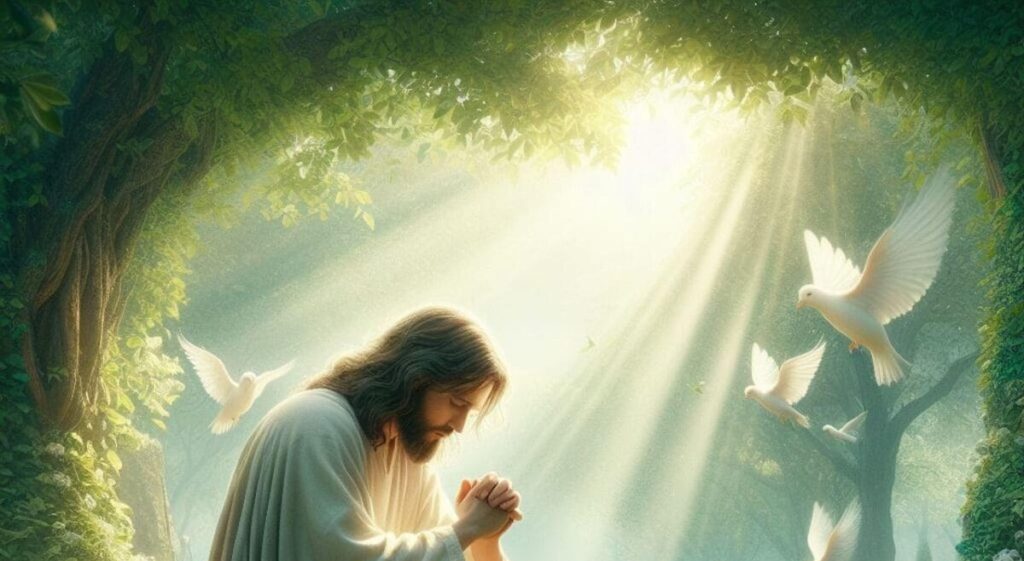
Chapter 11: The East Gate – Awaiting the Glory and the King’s Return
👉 Read Chapter 12: Jesus for Everyone to explore how Christ’s message touches every life with divine purpose.
The East Gate of Jerusalem holds a place of profound significance in Scripture, Jewish tradition, and Christian eschatology. Often referred to as the Golden Gate, it is believed to be the very gate through which the Shekinah glory of God once entered and will one day return. The East Gate, therefore, is a powerful emblem of hope, anticipation, divine glory, and the imminent return of the King—Jesus Christ.
1. Historical Placement and Symbolism
The East Gate was located on the eastern wall of Jerusalem and faced the Mount of Olives. This positioning is not coincidental; the sun rises in the east, and biblically, the east is associated with new beginnings, divine appearances, and God’s presence.
In Ezekiel 43:1-2, the prophet wrote, “Then the man brought me to the gate facing east, and I saw the glory of the God of Israel coming from the east. His voice was like the roar of rushing waters, and the land was radiant with His glory.”
This passage connects the East Gate to the manifest presence of God, suggesting that it was the gateway of divine entrance. Historically, it is believed that this gate was used by priests during worship and processions to the temple, reinforcing its sacred role.
2. The Glory of the Lord Departed and Promised to Return
Ezekiel 10 describes the sorrowful departure of God’s glory from the temple due to Israel’s rebellion. The glory lifted from the threshold, passed over the East Gate, and ascended from the Mount of Olives. This dramatic moment represents divine judgment but also leaves a prophetic promise of return.
In Ezekiel 43, we see that same glory returning—through the East Gate. This prophetic vision is echoed in the New Testament, where Jesus is often depicted returning in power and glory from the east.
3. Jesus and the East Gate
When Jesus made His triumphal entry into Jerusalem (Matthew 21:1-11), He came from the Mount of Olives—likely passing through the East Gate. This was a fulfillment of Zechariah 9:9: “See, your king comes to you, righteous and victorious, lowly and riding on a donkey.”
His first entry was in humility. But Revelation 19:11-16 promises His return in glory. When Christ returns, many believe He will again enter through the East Gate, this time not in meekness but as the conquering King.
4. The Sealed Gate – A Waiting Sign
In Ezekiel 44:1-2, the East Gate is declared shut: “This gate is to remain shut. It must not be opened; no one may enter through it. It is to remain shut because the Lord, the God of Israel, has entered through it.”
Interestingly, the East Gate was sealed by Ottoman Sultan Suleiman in the 1500s, possibly in an attempt to prevent the Messiah’s return. Ironically, this act unintentionally fulfills Ezekiel’s prophecy. The gate remains sealed to this day, waiting to be opened by divine command.
5. Hope and Expectation in the Waiting
The sealed East Gate becomes a symbol of watchful anticipation. As believers, we live between two arrivals—the first coming of Christ and His second. The East Gate reminds us to stay vigilant, pure, and hopeful.
Matthew 24:27 says, “For as lightning that comes from the east is visible even in the west, so will be the coming of the Son of Man.” The return of Jesus will be sudden, public, and glorious.
6. Living in Light of His Return
To live with the East Gate in mind is to live prepared. This means walking in holiness, serving with joy, enduring with patience, and spreading the gospel with urgency. The early church lived with this eager expectation, often greeting one another with “Maranatha”—”Come, Lord Jesus.”
The East Gate is a call to readiness. Just as the priests maintained the temple and awaited God’s presence, we are called to be faithful stewards of our lives and ministries until His return.
7. A Call to Worship and Glory
Psalm 24:7-9 proclaims:
“Lift up your heads, you gates; be lifted up, you ancient doors, that the King of glory may come in. Who is this King of glory? The Lord strong and mighty, the Lord mighty in battle.”
This poetic imagery points toward the East Gate, inviting the presence of the Lord. Worship is the proper posture as we await His glory. The East Gate leads us into worship that longs not just for blessings, but for the Blessed One Himself.
8. The Mount of Olives and the Gate of Return
The Mount of Olives, directly opposite the East Gate, is prophesied as the place where Jesus will return. Zechariah 14:4 says, “On that day His feet will stand on the Mount of Olives… and the Mount will be split in two.”
The East Gate, therefore, connects heaven and earth, past and future, prophecy and fulfillment. It becomes a portal through which eternity breaks into time.
9. The Church as a Gatekeeper
As the spiritual Body of Christ, the Church is now a gatekeeper, entrusted with preparing the way for the King. We open spiritual gates through prayer, holiness, and evangelism.
Isaiah 62:10 instructs: “Pass through, pass through the gates! Prepare the way for the people. Build up the highway! Remove the stones. Raise a banner for the nations.”
The East Gate is not passive—it’s prophetic. The Church must sound the trumpet, calling all to repentance and reconciliation before the King’s arrival.
10. Personal Application: Is Your Gate Open?
While the East Gate is currently sealed, the human heart must remain open. Revelation 3:20 reveals Jesus standing at the door and knocking. Is your life ready for His return? Have you opened your heart to the glory of the King?
Living in light of the East Gate means:
- Anticipating Jesus’ return with urgency
- Embracing holiness as preparation
- Standing as a watchman in prayer and faith
- Reflecting God’s glory to a waiting world
Conclusion: Open the Gate for the King of Glory
The East Gate is more than stone and mortar—it is a prophetic sign, a spiritual invitation, and a kingdom promise. As we look toward the rising Son, we declare: “Lift up your heads, you gates… that the King of glory may come in.”
Are you watching the horizon? Are you preparing the way?
The East Gate is waiting. And so must we— With hope, with reverence, and with expectation, until the King returns in glory.
The East Gate stands as a profound symbol of prophetic fulfillment and the anticipated return of Jesus Christ in glory. As we study its significance in Scripture, we are reminded to live in a posture of expectation and readiness. For a deeper look at how the gates of Jerusalem align with spiritual truths, explore our full Jesus for Everyone series, which breaks down each gate through a gospel-centered lens. Additionally, GotQuestions.org’s article on the Eastern Gate provides historical and theological insight into why this sealed gate still captures the attention of believers around the world. By integrating biblical history with present-day faith, this chapter serves as a valuable resource for those seeking to understand how prophecy shapes our daily walk with Christ.
